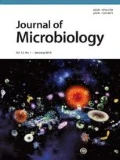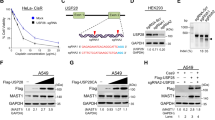Abstract
Kaposi’s sarcoma-associated herpesvirus (KSHV) is the major etiologic agent of Kaposi’s sarcoma, primary effusion lymphoma, and multicentric Castleman’s disease. Recent studies have indicated that KSHV can be detected at high frequency in patient-derived bladder cancer tissue and might be associated with the pathogenesis of bladder cancer. Bladder cancer is the second most common cancer of the genitourinary tract, and it has a high rate of recurrence. Because drug resistance is closely related to chemotherapy failure and cancer recurrence, we investigated whether KSHV infection is associated with drug resistance of bladder cancer cells. Some KSHV-infected bladder cancer cell lines showed resistance to an anti-cancer drug, cisplatin, possibly as a result of down-regulation of reactive oxygen species. Additionally, drug resistance acquired from KSHV infection could partly be overcome by HDAC1 inhibitors. Taken together, the data suggest the possible role of KSHV in chemo-resistant bladder cancer, and indicate the therapeutic potential of HDAC1 inhibitors in drug-resistant bladder cancers associated with KSHV infection.
Similar content being viewed by others
References
Agarwal, N. and Hussain, M. 2009. Management of bladder cancer: current and emerging strategies. Drugs 69, 1173–1187.
Badawi, H., Ahmed, H., Aboul Fadl, L., Helmi, A., Fam, N., Diab, M., Ismail, A., Badawi, A., and Saber, M. 2010. Herpes simplex virus type-2 in Egyptian patients with bladder cancer or cystitis. APMIS 118, 37–44.
Bechtel, J.T., Liang, Y., Hvidding, J., and Ganem, D. 2003. Host range of Kaposi’s sarcoma-associated herpesvirus in cultured cells. J. Virol. 77, 6474–6481.
Bolden, J.E., Peart, M.J., and Johnstone, R.W. 2006. Anticancer activities of histone deacetylase inhibitors. Nat. Rev. Drug Discov. 5, 769–784.
Botrugno, O.A., Santoro, F., and Minucci, S. 2009. Histone deacetylase inhibitors as a new weapon in the arsenal of differentiation therapies of cancer. Cancer Lett. 280, 134–144.
Brander, C., Suscovich, T., Lee, Y., Nguyen, P.T., O’Connor, P., Seebach, J., Jones, N.G., van Gorder, M., Walker, B.D., and Scadden, D.T. 2000. Impaired CTL recognition of cells latently infected with Kaposi’s sarcoma-associated herpes virus. J. Immunol. 165, 2077–2083.
Brulois, K.F., Chang, H., Lee, A.S., Ensser, A., Wong, L.Y., Toth, Z., Lee, S.H., Lee, H.R., Myoung, J., Ganem, D., et al. 2012. Construction and manipulation of a new Kaposi’s sarcoma-associated herpesvirus bacterial artificial chromosome clone. J. Virol. 86, 9708–9720.
Butler, L.M., Zhou, X., Xu, W.S., Scher, H.I., Rifkind, R.A., Marks, P.A., and Richon, V.M. 2002. The histone deacetylase inhibitor SAHA arrests cancer cell growth, up-regulates thioredoxin-binding protein-2, and down-regulates thioredoxin. Proc. Natl. Acad. Sci. USA 99, 11700–11705.
Chang, Y., Cesarman, E., Pessin, M.S., Lee, F., Culpepper, J., Knowles, D.M., and Moore, P.S. 1994. Identification of herpesvirus-like DNA sequences in AIDS-associated Kaposi’s sarcoma. Science 266, 1865–1869.
Chao, M.W., Chu, P.C., Chuang, H.C., Shen, F.H., Chou, C.C., Hsu, E.C., Himmel, L.E., Huang, H.L., Tu, H.J., Kulp, S.K., et al. 2016. Non-epigenetic function of HDAC8 in regulating breast cancer stem cells by maintaining Notch1 protein stability. Oncotarget 7, 1796–1807.
Chen, J., Adikari, M., Pallai, R., Parekh, H.K., and Simpkins, H. 2008. Dihydrodiol dehydrogenases regulate the generation of reactive oxygen species and the development of cisplatin resistance in human ovarian carcinoma cells. Cancer Chemother. Pharmacol. 61, 979–987.
Cheng, F., Pekkonen, P., Laurinavicius, S., Sugiyama, N., Henderson, S., Gunther, T., Rantanen, V., Kaivanto, E., Aavikko, M., Sarek, G., et al. 2011. KSHV-initiated notch activation leads to membranetype- 1 matrix metalloproteinase-dependent lymphatic endothelial- to-mesenchymal transition. Cell Host Microbe 10, 577–590.
Choi, Y.M., Kim, H.K., Shim, W., Anwar, M.A., Kwon, J.W., Kwon, H.K., Kim, H.J., Jeong, H., Kim, H.M., Hwang, D., et al. 2015. Mechanism of cisplatin-induced cytotoxicity is correlated to impaired metabolism due to mitochondrial ROS generation. PLoS One 10, e0135083.
Dai, W., Zhou, J., Jin, B., and Pan, J. 2016. Class III-specific HDAC inhibitor Tenovin-6 induces apoptosis, suppresses migration and eliminates cancer stem cells in uveal melanoma. Sci. Rep. 6, 22622
Escudero, A.L., Luque, R.J., Quintero, A., Alvarez-Kindelan, J., Requena, M.J., Montironi, R., and Lopez-Beltran, A. 2005. Association of human herpesvirus type 6 DNA with human bladder cancer. Cancer Lett. 230, 20–24.
Frame, F.M., Pellacani, D., Collins, A.T., Simms, M.S., Mann, V.M., Jones, G.D., Meuth, M., Bristow, R.G., and Maitland, N.J. 2013. HDAC inhibitor confers radiosensitivity to prostate stem-like cells. Br. J. Cancer 109, 3023–3033.
Gabriel, U., Bolenz, C., and Michel, M.S. 2007. Experimental models for therapeutic studies of transitional cell carcinoma. Anticancer Res. 27, 3163–3171.
Gasperini, P., Espigol-Frigole, G., McCormick, P.J., Salvucci, O., Maric, D., Uldrick, T.S., Polizzotto, M.N., Yarchoan, R., and Tosato, G. 2012. Kaposi sarcoma herpesvirus promotes endothelial- to-mesenchymal transition through Notch-dependent signaling. Cancer Res. 72, 1157–1169.
Gurzu, S., Ciortea, D., Munteanu, T., Kezdi-Zaharia, I., and Jung, I. 2013. Mesenchymal-to-endothelial transition in Kaposi sarcoma: a histogenetic hypothesis based on a case series and literature review. PLoS One 8, e71530.
Jemal, A., Bray, F., Center, M.M., Ferlay, J., Ward, E., and Forman, D. 2011. Global cancer statistics. CA Cancer J. Clin. 61, 69–90.
Jones, T., Ye, F., Bedolla, R., Huang, Y., Meng, J., Qian, L., Pan, H., Zhou, F., Moody, R., Wagner, B., et al. 2012. Direct and efficient cellular transformation of primary rat mesenchymal precursor cells by KSHV. J. Clin. Invest. 122, 1076–1081.
Kato, T., Shimono, Y., Hasegawa, M., Jijiwa, M., Enomoto, A., Asai, N., Murakumo, Y., and Takahashi, M. 2009. Characterization of the HDAC1 complex that regulates the sensitivity of cancer cells to oxidative stress. Cancer Res. 69, 3597–3604.
Kaufman, D.S., Shipley, W.U., and Feldman, A.S. 2009. Bladder cancer. Lancet 374, 239–249.
Kong, D., Li, Y., Wang, Z., and Sarkar, F.H. 2011. Cancer stem cells and epithelial-to-mesenchymal transition (EMT)- phenotypic cells: are they cousins or twins? Cancers 3, 716–729.
Kuo, M.H. and Allis, C.D. 1998. Roles of histone acetyltransferases and deacetylases in gene regulation. Bioessays 20, 615–626.
Ledaki, I., McIntyre, A., Wigfield, S., Buffa, F., McGowan, S., Baban, D., Li, J.L., and Harris, A.L. 2015. Carbonic anhydrase IX induction defines a heterogeneous cancer cell response to hypoxia and mediates stem cell-like properties and sensitivity to HDAC inhibition. Oncotarget 6, 19413–19427.
Lee, J., Jeon, H., Yoo, S.M., Park, J., and Lee, M.S. 2016a. The role of Kaposi’s sarcoma-associated herpesvirus infection in the proliferation of human bladder cancer cells. Tumour Biol. 37, 2587–2596.
Lee, M.S., Yuan, H., Jeon, H., Zhu, Y., Yoo, S., Shi, S., Krueger, B., Renne, R., Lu, C., Jung, J.U., et al. 2016b. Human mesenchymal stem cells of diverse origins support persistent infection with Kaposi’s sarcoma-associated herpesvirus and manifest distinct angiogenic, invasive, and transforming phenotypes. mBio 7, E02109–02115.
Li, X., Feng, J., and Sun, R. 2011. Oxidative stress induces reactivation of Kaposi’s sarcoma-associated herpesvirus and death of primary effusion lymphoma cells. J. Virol. 85, 715–724.
Ma, Q., Cavallin, L.E., Leung, H.J., Chiozzini, C., Goldschmidt-Clermont, P.J., and Mesri, E.A. 2013. A role for virally induced reactive oxygen species in Kaposi’s sarcoma herpesvirus tumorigenesis. Antioxid. Redox Signal. 18, 80–90.
Mallini, P., Lennard, T., Kirby, J., and Meeson, A. 2014. Epithelialto- mesenchymal transition: what is the impact on breast cancer stem cells and drug resistance. Cancer Treat. Rev. 40, 341–348.
Marie-Egyptienne, D.T., Lohse, I., and Hill, R.P. 2013. Cancer stem cells, the epithelial to mesenchymal transition (EMT) and radioresistance: potential role of hypoxia. Cancer Lett. 341, 63–72.
Marks, P.A. 2006. Thioredoxin in cancer-role of histone deacetylase inhibitors. Semin Cancer Biol. 16, 436–443.
McAllister, S.C. and Moses, A.V. 2007. Endothelial cell- and lymphocyte-based in vitro systems for understanding KSHV biology. Curr. Top. Microbiol. Immunol. 312, 211–244.
Mottamal, M., Zheng, S., Huang, T.L., and Wang, G. 2015. Histone deacetylase inhibitors in clinical studies as templates for new anticancer agents. Molecules 20, 3898–3941.
Panagiotakis, G.I., Papadogianni, D., Chatziioannou, M.N., Lasithiotaki, I., Delakas, D., and Spandidos, D.A. 2013. Association of human herpes, papilloma and polyoma virus families with bladder cancer. Tumour Biol. 34, 71–79.
Paradzik, M., Bucevic-Popovic, V., Situm, M., Jaing, C.J., Degoricija, M., McLoughlin, K.S., Ismail, S.I., Punda-Polic, V., and Terzic, J. 2014. Association of Kaposi’s sarcoma-associated herpesvirus (KSHV) with bladder cancer in Croatian patients. Tumour Biol. 35, 567–572.
Pathania, R., Ramachandran, S., Mariappan, G., Thakur, P., Shi, H., Choi, J.H., Manicassamy, S., Kolhe, R., Prasad, P.D., Sharma, S., et al. 2016. Combined inhibition of DNMT and HDAC blocks the tumorigenicity of cancer stem-like cells and attenuates mammary tumor growth. Cancer Res. 76, 3224–3235.
Schulz, T.F. 2000. KSHV (HHV8) infection. J. Infect. 41, 125–129.
Shirato, A., Kikugawa, T., Miura, N., Tanji, N., Takemori, N., Higashiyama, S., and Yokoyama, M. 2014. Cisplatin resistance by induction of aldo-keto reductase family 1 member C2 in human bladder cancer cells. Oncol. Lett. 7, 674–678.
Siddik, Z.H. 2003. Cisplatin: mode of cytotoxic action and molecular basis of resistance. Oncogene 22, 7265–7279.
Vinall, R.L., Ripoll, A.Z., Wang, S., Pan, C.X., and deVere White, R.W. 2012. MiR-34a chemosensitizes bladder cancer cells to cisplatin treatment regardless of p53-Rb pathway status. Int. J. Cancer 130, 2526–2538.
Xu, W.S., Parmigiani, R.B., and Marks, P.A. 2007. Histone deacetylase inhibitors: molecular mechanisms of action. Oncogene 26, 5541–5552.
Ye, F., Zhou, F., Bedolla, R.G., Jones, T., Lei, X., Kang, T., Guadalupe, M., and Gao, S.J. 2011. Reactive oxygen species hydrogen peroxide mediates Kaposi’s sarcoma-associated herpesvirus reactivation from latency. PLoS Pathog. 7, e1002054.
Yin, W.Y., Lee, M.C., Lai, N.S., and Lu, M.C. 2015. BK virus as a potential oncovirus for bladder cancer in a renal transplant patient. J. Formos. Med. Assoc. 114, 373–374.
Yoo, S.M., Jang, J., Yoo, C., and Lee, M.S. 2014. Kaposi’s sarcomaassociated herpesvirus infection of human bone-marrow-derived mesenchymal stem cells and their angiogenic potential. Arch. Virol. 159, 2377–2386.
Author information
Authors and Affiliations
Corresponding author
Additional information
These authors contributed equally to this work.
Rights and permissions
About this article
Cite this article
Lee, S., Jang, J., Jeon, H. et al. Latent Kaposi’s sarcoma-associated herpesvirus infection in bladder cancer cells promotes drug resistance by reducing reactive oxygen species. J Microbiol. 54, 782–788 (2016). https://doi.org/10.1007/s12275-016-6388-x
Received:
Revised:
Accepted:
Published:
Issue Date:
DOI: https://doi.org/10.1007/s12275-016-6388-x




